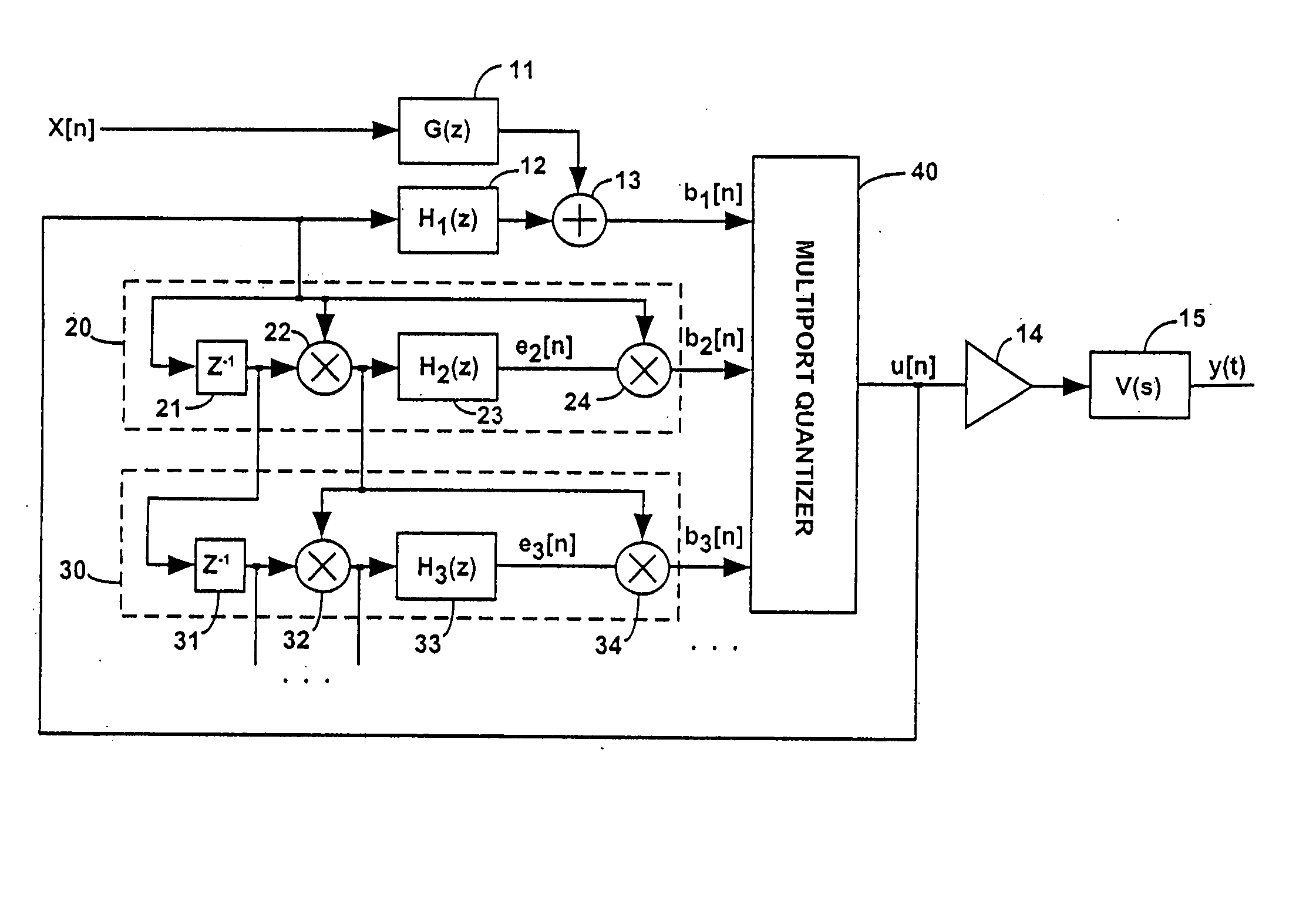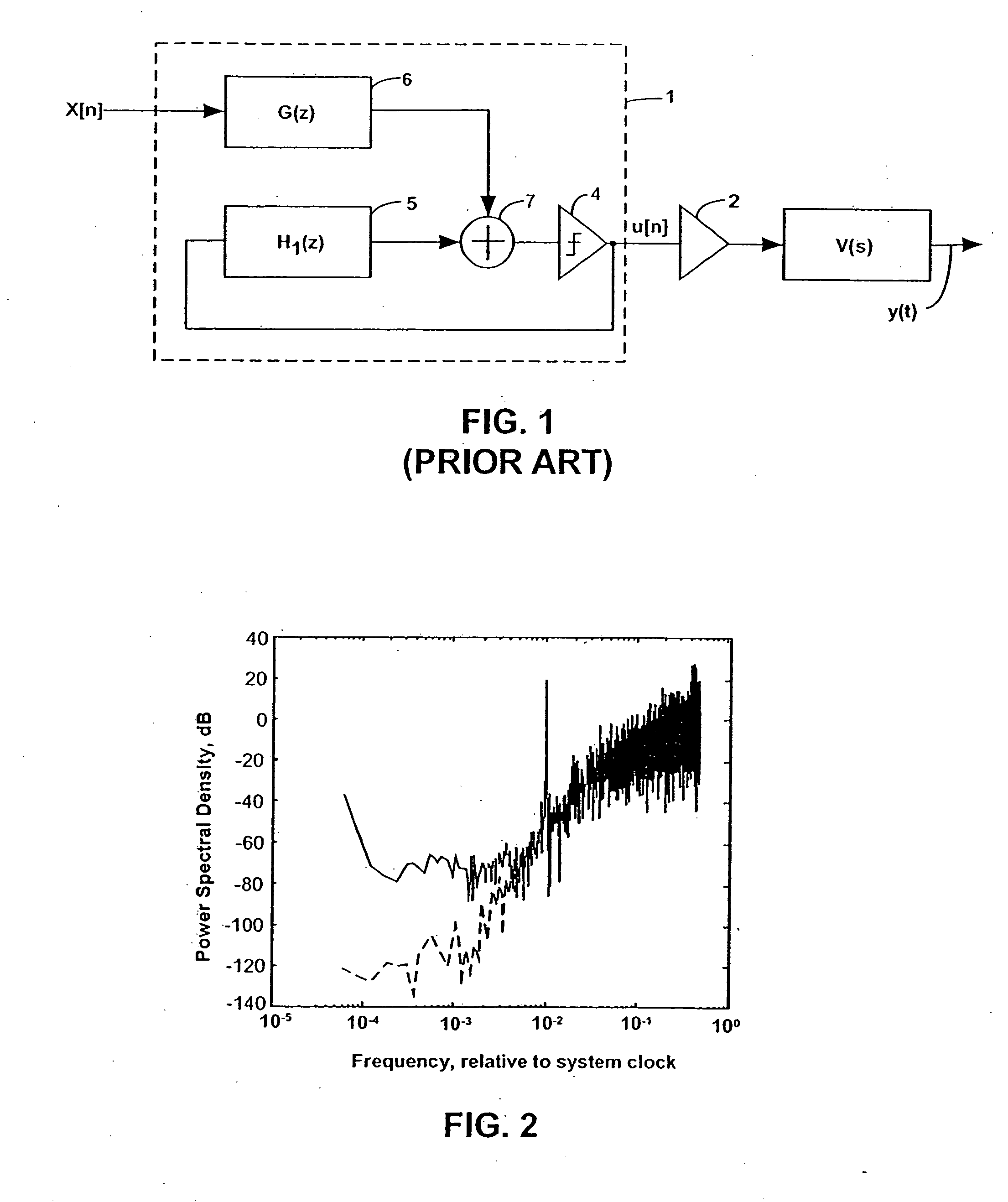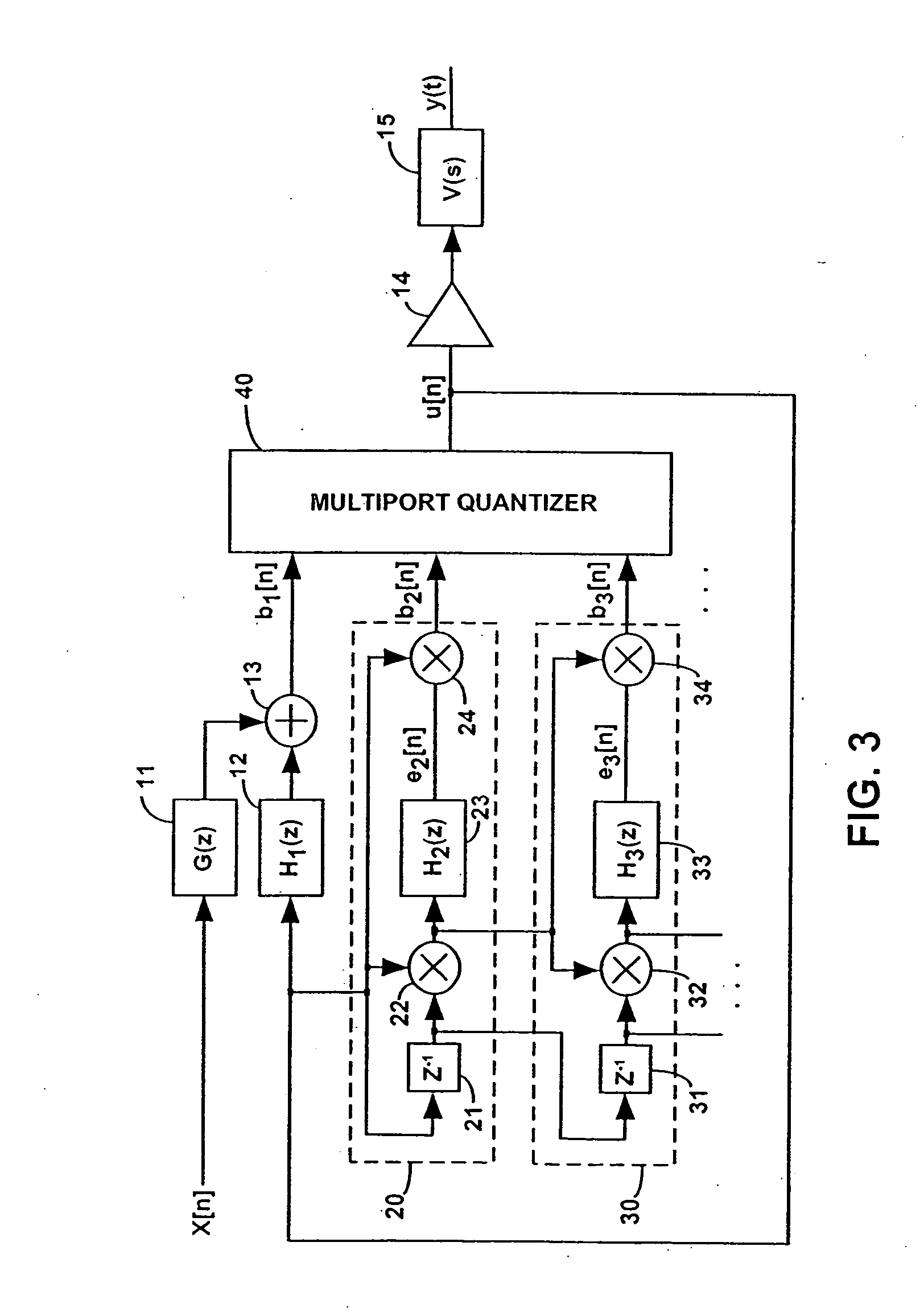Oversampling D/A converter and method for shaping nonlinear intersymbol interference in an oversampling D/A converter
a converter and oversampling technology, applied in the field of digital to analog converters, can solve the problems of reducing the performance of each prior, limiting the performance of each prior, and reducing the performance of the modulator, so as to reduce the nlisi energy level present
- Summary
- Abstract
- Description
- Claims
- Application Information
AI Technical Summary
Benefits of technology
Problems solved by technology
Method used
Image
Examples
Embodiment Construction
[0029]FIG. 3 shows, schematically, the preferred embodiment of the present invention. A delta-sigma modulator, as discussed above, is modified to include NLISI shaper circuits into the feedback loop. Some of the elements correspond to those already described to the prior art embodiment: first and second digital filtering elements 11 and 12, a summing element 13, a unit element DAC 14, and a continuous time filter 15. Exemplary expressions of the transfer functions G(z) and H1(z) can be found in Norsworth, Schreier & Temes, already cited above, pp. 142-152.
[0030] However, the embodiment of FIG. 3 shows shaper circuits not present in the prior art. These may include one or more of the following: a shaper circuit 20 for spectrally shaping second-order NLISI, a shaper circuit 30 for spectrally shaping third-order NLISI, and shaper circuits for shaping higher orders of NLISI (not shown in the figure). It should be noted that NLISI starts at the second order. First-order intersymbol inte...
PUM
 Login to View More
Login to View More Abstract
Description
Claims
Application Information
 Login to View More
Login to View More - R&D
- Intellectual Property
- Life Sciences
- Materials
- Tech Scout
- Unparalleled Data Quality
- Higher Quality Content
- 60% Fewer Hallucinations
Browse by: Latest US Patents, China's latest patents, Technical Efficacy Thesaurus, Application Domain, Technology Topic, Popular Technical Reports.
© 2025 PatSnap. All rights reserved.Legal|Privacy policy|Modern Slavery Act Transparency Statement|Sitemap|About US| Contact US: help@patsnap.com



